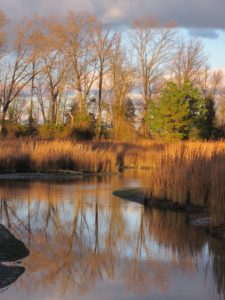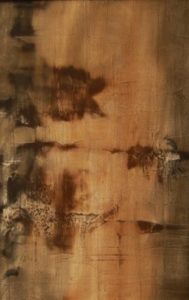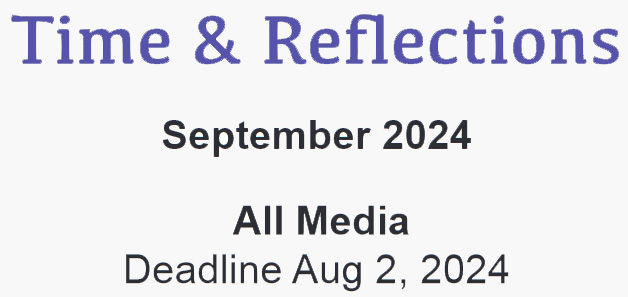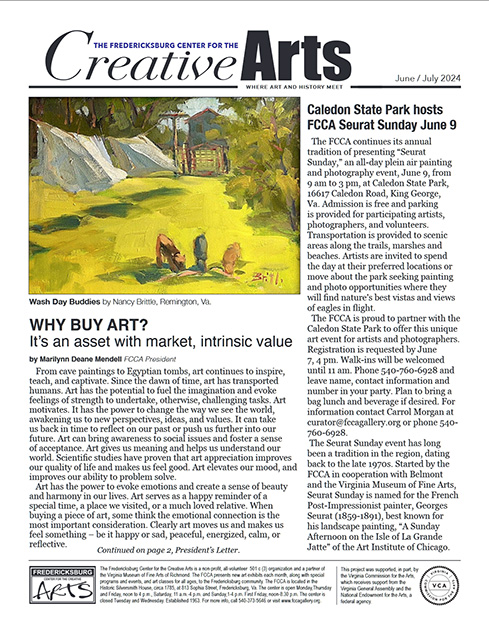Step out onto the Planet. Draw a circle a 100 feet round.
Inside the circle are 300 things nobody understands and, maybe, nobody’s ever seen. How many can you find?
— Lew Welch, American Poet
Our work began with a desire to look more closely at the earth and to spark questions about invisible processes that operate in nature. In exploring creations such as sea shells, tree knobs, lichen, cloudy vistas, wetland meadows, ice-covered rock, and desert sand, we started to wonder about the imperceptible -- What makes soil smell after a rain? What does photosynthesis look like? What gives shells such complex patterns and shapes? What makes a shoreline shift? And on and on….
This exhibition doesn’t try to answer such questions; rather, it depicts, through photographs and abstract paintings, traces of what ignited our curiosity within those 100-foot circles we drew upon the earth when we went out to play.
Millie Abell
 When photographing nature, I like to return to the same locations in different seasons, in diverse weather, and at various times of day. Wetlands fascinate me, and so most of the photographs in this exhibition were taken around Jamestown Island and at Big Meadows in the Shenandoah National Park.
When photographing nature, I like to return to the same locations in different seasons, in diverse weather, and at various times of day. Wetlands fascinate me, and so most of the photographs in this exhibition were taken around Jamestown Island and at Big Meadows in the Shenandoah National Park.
Jamestown Island, for example, is compelling because when we cross its bridges at high tide, we find that the incoming water becomes a mirror reflecting sky, clouds, trees, cattails and cordgrass. As the outgoing tide drains the marsh, it reveals a mud floor that, while some consider ugly, is a platform that’s vital to soaking up floods, filtering water, and supporting habitats for the amphibious fringe. Mirror and muck form a unity that, with the comings and goings of the tide, reflects the larger ecosystem in which this marsh is nestled and reveals the vitality it hides beneath the water.
I have a BS, MS, and PhD in the area of learning and instruction from Indiana University, where graduate coursework included the study of visual literacy and still photography.
Ray and Millie reside in Williamsburg and are graduates of Virginia Master Naturalist Basic Training. While Millie went on to become a certified Master Naturalist in 2015, Ray hasn’t finished the work toward this credential; he remains outside playing and was last seen still circling Big Meadows.
Ray Abell
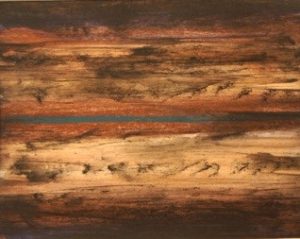 The idea for many of my nature paintings began at Shenandoah National Park while hiking with Millie. We go to the park during all four seasons and my work draws from objects, patterns, and colors we find on those hikes, such as decaying trees, dried-out cicadas, moss-covered rock, fresh and stagnant water, and lightning-struck tree bark.
The idea for many of my nature paintings began at Shenandoah National Park while hiking with Millie. We go to the park during all four seasons and my work draws from objects, patterns, and colors we find on those hikes, such as decaying trees, dried-out cicadas, moss-covered rock, fresh and stagnant water, and lightning-struck tree bark.
I spent three years in Saudi Arabia, and so the desert also has a special attraction to me; even now I look at sketches and photographs and paint from them. Some of the things that motivate me include: red and white sands; smooth and sharp rocks; mountain ranges; stillness; solitude; hot winds; the feel of dry desert heat; the smell of desert dust; the scent of dry and wet rocks.
I try to paint the feeling of walking through nature. I want to trigger the smells of grass, trees and rocks when dry and when wet. I want to capture the play of sunlight on soil, water and air. This is part of the essence of nature to me, and closeness to nature is important. I like to “push” my paintings from what I see to what I feel – that’s why I do abstractions.
I have a BFA in painting from the University of Hartford, Hartford Art School, an MFA in Photography from Ohio University, and I completed the George Eastman House Advanced Studies Workshop in Rochester, NY. The Poetry Society of Virginia awarded my poem Solitaire (desert memories, Kingdom of Saudi Arabia), First Prize in the 2016 Ada Sanderson Memorial nature category, in competition with 106 other entries.

